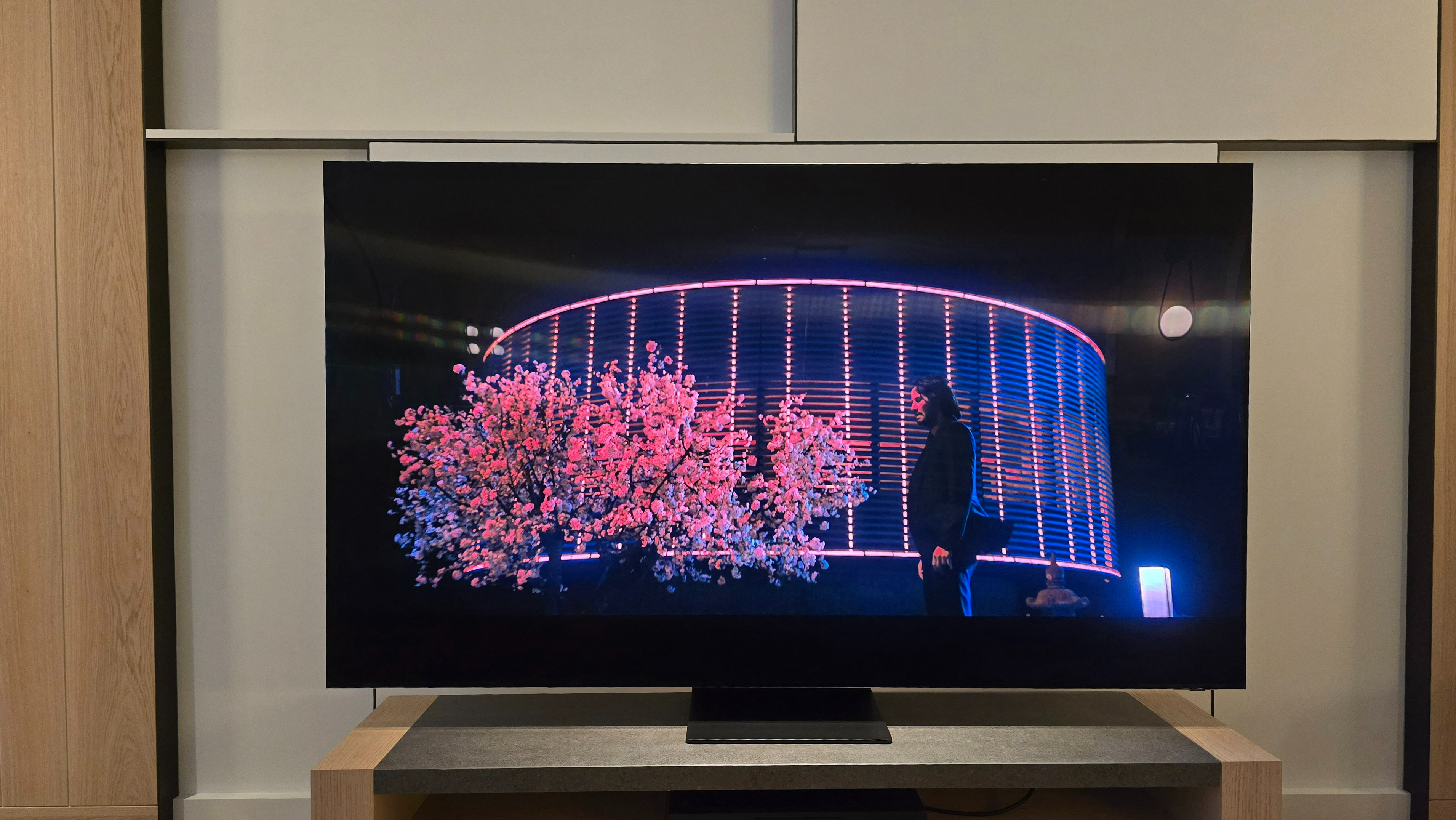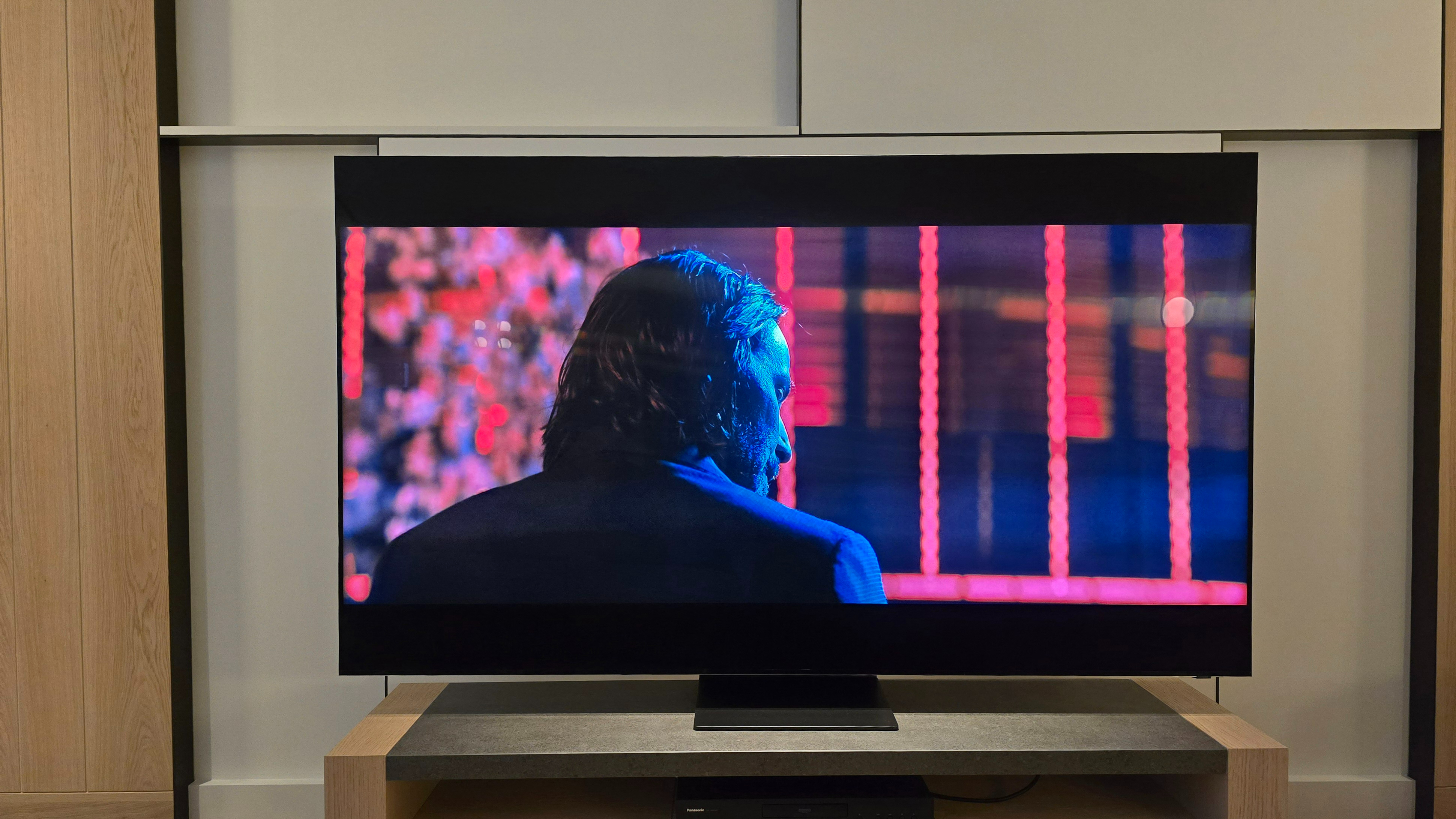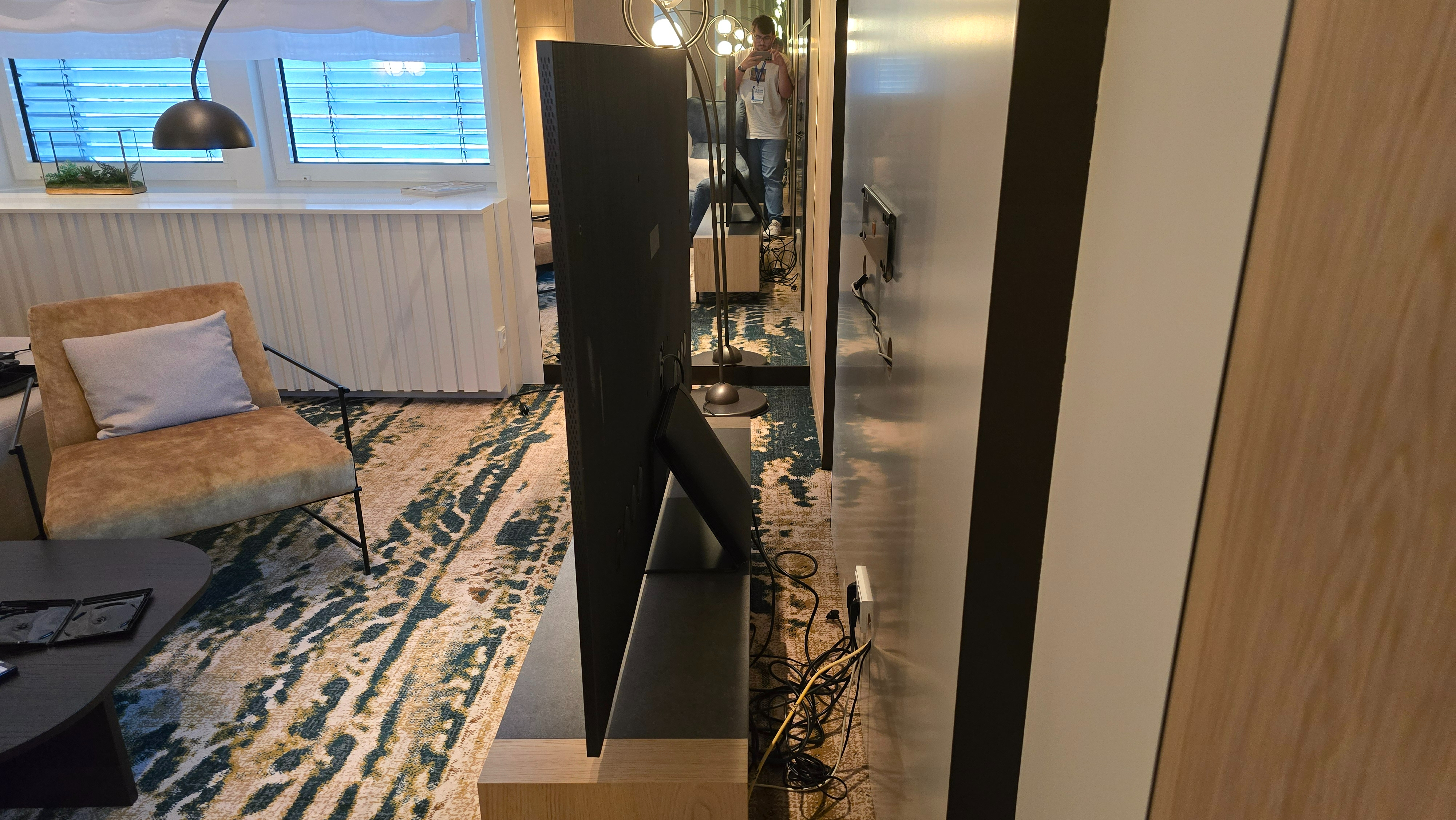
Love it or hate it, 8K is here to stay, and Samsung is making a serious push in its 2024 lineup to put it into the hands of more consumers than ever. This is evident with the QN800D, its latest step-down Neo QLED that sits beneath the QN900D; a TV we first came into contact with at CES back in January.
Samsung has since held its own "World of Samsung" event in Frankfurt, Germany, where I got to take a closer look at the brand's upcoming range of Neo QLED and OLED TVs. However, unlike most shows, I was treated to a special behind-closed-doors demo of this new TV and was even given free rein to test this TV for a full hour.
So has 8K won me over? The jury is still out on that, but I certainly have some early impressions. Note that this won't serve as our definitive review of the Samsung QN800D as we'll wait until it's in our AV test room to form our final thoughts.
Price
Samsung is yet to reveal pricing for this model in the UK and Australia, but we do know how much it'll set you back in the US. The 65-inch model costs $3500, the 75-inch costs $4500, and the 85-inch costs $6000. Remember that this is the mid-range model in Samsung's 2024 8K TV lineup, with the QN900D and QN700D serving as higher and lower-end models respectively.
You might be wondering how that stacks up to last year's pricing, and the good news is that it is exactly the same as last year's QN800C in the US; we'll have to wait until Samsung releases international pricing information to see if that sentiment is felt on our side of the pond and Down Under.
Build

I was treated to a 75-inch version of this TV during my brief hands-on time with it, although it also comes in 65- and 85-inch variants. While the TV was irrefutably large, it was also surprisingly slender; especially considering it's not an OLED. Alright, it's not as thin as an OLED, granted, but its uniform thickness throughout and modest pedestal stand helped to give it a more manageable footprint.
It's worth noting that it's not a huge departure from the 8K TVs from Samsung's 2023 lineup when it comes to design, as the same perforated edges and slender bezels also make a return. It doesn't feature the mirrored Infinity Air Design stand of its more expensive counterpart though, meaning we don't get a futuristic floating effect this time around.
Features

If it wasn't obvious enough already, this is an 8K TV. It features a 7680x4320 resolution, and it uses Samsung's Neo QLED screen technology which combines Mini LED backlighting with QLED (quantum dots); this screen technology will also feature on its 4K Neo QLED sets for 2024.
8K is still a hotly debated topic, and one that I've weighed in on many times myself, but I'll attempt to keep it neutral here. The upside to 8K is that through upscaling, content can look fantastic, with sharp and vivid detail that exceeds anything you'll see on a 4K television. The downside is that there is a very, very limited amount of native 8K content out there for you to watch; none of the major streaming services support it and there is no disc format, nor do either of the current PlayStation or Xbox consoles support it for their games.
However, 2024 looks like it could be a big year for Samsung's upscaling algorithms thanks to (stop us if you've heard this one before) AI. Samsung has outfitted most of its 2024 TVs with its new NQ4 AI Gen2 Processor, which is set to unlock a whole bunch of picture and sound upgrades; more so for 8K than 4K in many instances.
Examples I was shown include improved motion on fast-moving objects like footballs, enhanced upscaled graphical fidelity for finer details like windows on a New York City skyline scene, and enhanced contrast for creating admittedly impressive depth to the image (more on that later). While I'm still sceptical of AI and its future implementations, I can't deny that Samsung might have a point here.
Onto the more conventional aspects of this TV, it features a hearty roster of gaming features, including four HDMI 2.1 sockets for 4K/120Hz gaming support with VRR and ALLM. You'll find these ports on the One Connect box, Samsung's external TV appendage that hosts most of the TV's internals and connections which it's been using for many years now.
This TV also features a familiar set of picture and sound features which should be second nature to anyone that's used a Samsung TV. HDR is supported in the HDR10+, HDR10 and HLG formats with no sign of Dolby Vision as per usual; Samsung is stuck firmly in its ways with its choice of HDR formats. Dolby is tentatively welcomed back in the audio department though, as Dolby Atmos is supported on this TV.
On the subject of sound, Samsung has also included a few audio-focused AI upgrades such as 'Active Voice Amplifier Pro' which intelligently separates dialogue from the rest of the audio mix to enhance speech clarity. If you have a compatible Samsung soundbar you'll also be able to take advantage of Q Symphony, which will combine your TV's built-in speakers with your soundbar.
Finally, Tizen OS is getting a boost in 2024 with new user-generated content suggestions and enhancements to Samsung TV Plus coming with the latest edition of Samsung's TV operating system.
Picture

I'll stress once more that I did not have the ideal picture testing environments to deal with during this session, however, it was much more in-depth compared to other hands-on sessions I've partaken in. The TV was hooked up to a Panasonic DP-UB9000 4K Blu-ray player and I predominantly used the latest John Wick and Blade Runner films for my testing.
Starting with Blade Runner 2049, I was immediately struck by how impressive the black levels were on this TV. Once again, this is not an OLED TV, but the black bars flanking the picture were impressively deep and didn't verge into a greyish hue to my eye. I even switched the subtitles on in an attempt to catch it, but the QN800D remained resistant to blooming.
Another OLED-like quality would be the TV's admirable handling of contrast. It doesn't reach the same heights as OLED, but it's nonetheless impressive when it comes to influencing three-dimensional depth and tricky dark scenes alike.
Unfortunately, I did notice some brightness clipping on the white section of the wall behind Officer K in the baseline interview scene, as the lines on the wall flickered noticeably throughout the scene.
Switching to John Wick Chapter 4's enthralling Osaka Continental action sequence, the QN800D impresses once again. The abundance of neon lights in this scene is well suited to Samsung's punchy colour presentation, although skin tones suffered slightly as a consequence as they didn't look particularly accurate.
As John Wick began his 'gun-fu' routine to dispatch the baddies, I had no problems with how the TV handled motion. I couldn't identify any discernible judder, but at the same time, it didn't seem over-smoothed.
Finally, as this is an 8K TV, it's worth talking about detail levels. While I'm still apprehensive about upscaling, this TV was impressively crisp and detailed. The outlines of characters on the screen were razor sharp, and the textures of skin, clothing and within the environment of this scene were all very impressive. That being said, I'm not sure if I'd call this TV subtle or authentic, as despite various attempts at tweaking picture settings it always felt slightly off in some regard. I can't quite put my finger on it, but I'm sure further testing in our AV and TV testing room will enlighten me.
Sound

As is the case with picture performance, my surroundings weren't best suited to sound testing either. I did though manage to give the on-board sound system on the QN800D a quick spin, and my early impressions are middling.
While the speakers can go impressively loud, I found the dynamic impact to be a bit underwhelming. For instance, gunshots in John Wick: Chapter 4 were delivered with a snap but little punch to follow through, leaving them sounding slightly limp. Likewise, the pulsing soundtrack that accompanies the Osaka action sequence was particularly engaging.
Despite the size of this TV, I also found the sound to lack scale, meaning I would've appreciated a bit more height and breadth to the sound. The good news is that dialogue was very clear, meaning I had no trouble discerning Keanu Reeves' grizzled line delivery before the action kicked off.
Early verdict
I won't say that this TV has completely changed my mind about 8K TVs as a whole, but I'm certainly keen to see more of what this TV has to offer. Its striking detail and impressive black depths have reeled me in, but more time is needed to affirm how I really feel about this mid-level 8K TV.
MORE:
Read our Samsung S95D hands-on review
And our full LG Z3 8K OLED TV review
And check out our picks for the best 8K TVs







